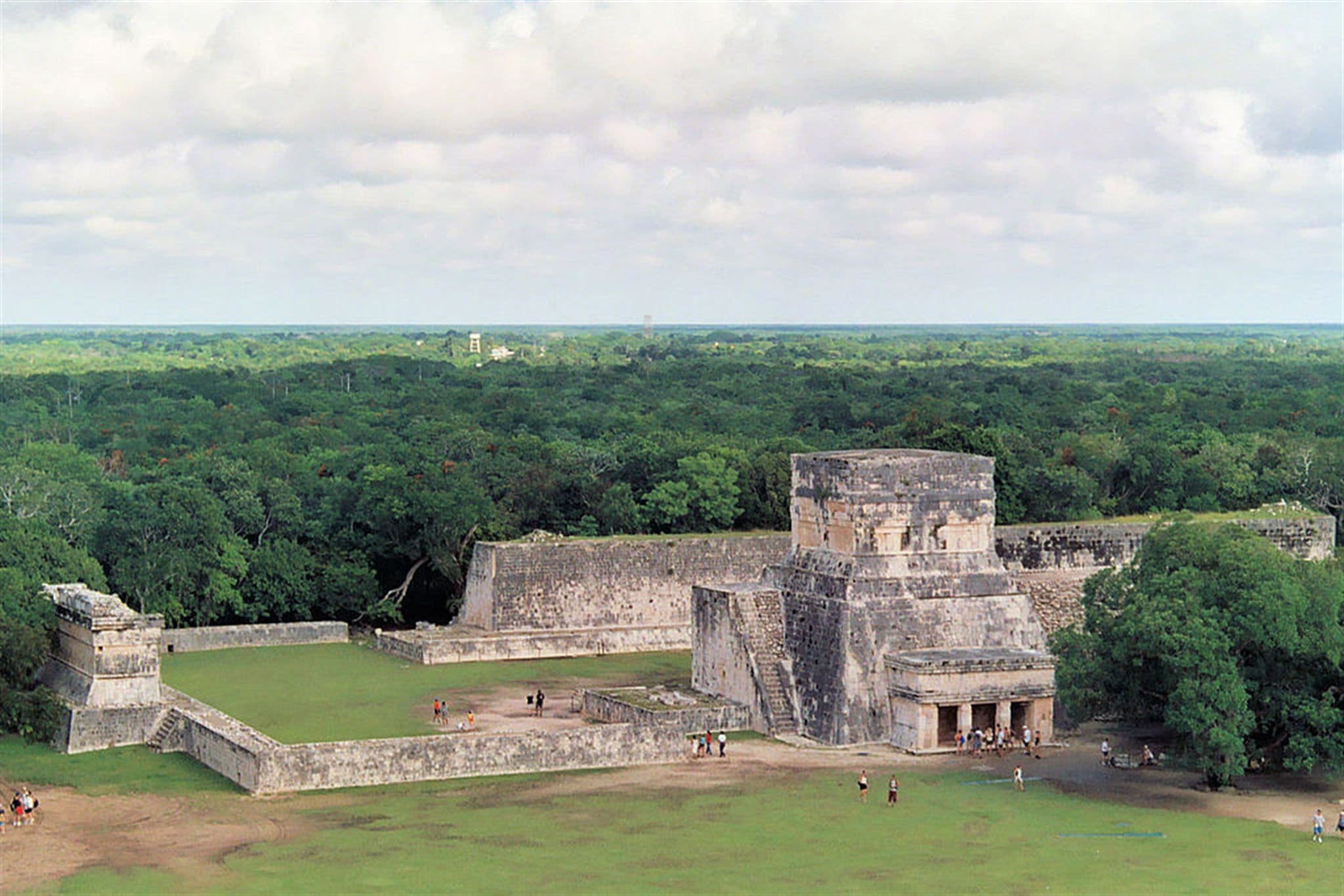Evidence #38 | September 19, 2020
Book of Mormon Evidence: Watch Towers
Post contributed by
Scripture Central

Abstract
The recent discovery of a large Maya fortress provides support for the Book of Mormon’s description of military strongholds featuring defensive watchtowers.Watch Towers and Strongholds in the Book of Mormon
In Alma 50:4–5 we read about Captain Moroni’s extensive fortifications for defending the greater land of Zarahemla. Overlooking earthen ridges or walls, the Nephites erected fortified towers. These watchtowers were elevated observatories that allowed watchmen to spot approaching enemies and defend against them from an advantageous position. They also may have functioned as armories for storing stones that could be hurled down at enemy combatants (see Alma 49:19; Alma 50:5).
Captain Moroni’s massive public works fortifications were erected ca. 72 BC. The text calls a fortified city a “stronghold,” and Nephite strongholds are mentioned from that time through the end of the Nephite record.1 Many strongholds mentioned in the Book of Mormon were under Lamanite control, which suggests that the Lamanites adopted or took advantage of Captain Moroni’s brilliant military engineering tactics.2 The Gadianton robbers also built strongholds (3 Nephi 4:1).
Towers and Fortifications in Ancient Mesoamerica
Wooden palisades are not likely to have survived the ravages of time, but earthen ridges and watch towers are things we could reasonably expect to see in the archaeological record—and, indeed, we do. The study of Maya structures was revolutionized when the Pacunam Lidar Initiative (PLI) in 2016 surveyed 12 tracts of land totaling 2,144 square kilometers in the northern Petén. Lidar is a fairly recent laser technology which allows researchers to see through dense jungle foliage and map the contours of the underlying terrain.3
Extensive fortifications were found in several blocks of the lidar survey. The El Zotz survey block has some of the highest concentrations of defensive features found in the PLI flyover. On a steep hill between El Zotz and Tikal, the survey found the remains of a fortress which has now been named “La Cuernavilla.”4 It had 6 meter (20 foot) high walls, moats, watchtowers, and supplies of round stones the archaeologists are calling “sling stones” because they probably served as ammunition for warrior’s slings.5 The researchers studying the site explain, “At present, this may be one of the largest citadels in the Maya region. Our hunch too is that it dates largely to the Early Classic period” (ca. AD 250–500).6
Within the El Zotz PLI survey block, researchers have identified 37 watchtowers. Seven of these lookouts are alongside ditch and wall structures, just as the Book of Mormon describes.
Archaeologists call one of these 37 watchtowers, mapped in 2016 by Omar Alcover Firpi, “El Fortín.” They describe it as a “circular redoubt” positioned to monitor north south movement in the valley immediately east of El Zotz. Other circular redoubts have now been identified around El Zotz and El Palmar.7 Watch towers have also been found with defensive wall structures in the Tecolote/La Pasadita area north of Yaxchilan.8
Book of Mormon Central, “What Was the Nature of Nephite Fortifications? (Alma 50:6),” KnoWhy 158 (August 4, 2016).
John L. Sorenson, “Fortifications in the Book of Mormon Account Compared with Mesoamerican Fortifications,” in Warfare in the Book of Mormon, ed. Stephen D. Ricks and William J. Hamblin (Salt Lake City and Provo, UT: Deseret Book and FARMS, 1990), 425–444.
John L. Sorenson, “Digging in the Book of Mormon: Our Changing Understanding Ancient America and Its Scripture,” Ensign, September 1984, online at churchofjesuschrist.org.
- 1. See Alma 50:6, 53:5, Helaman 1:27 (ca. 51 BC), Mormon 5:4 (ca. AD 379).
- 2. See Alma 51:27; 52:19, 21; 55:33, 56:21; 58:1–2, 6, 23.
- 3. See Tom Clynes, “Lasers Reveal Maya War Ruins,” National Geographic, March 1, 2019, accessed November 26, 2019, online at nationalgeographic.com.
- 4. See Stephen Houston, Thomas G. Garrison, and Edwin Román, “A Fortress in Heaven: Researching the Long Term at El Zotz, Guatemala” in An Inconstant Landscape: The Maya Kingdom of El Zotz, Guatemala, ed. Thomas G. Garrison and Stephen Houston (Boulder, CO: University Press of Colorado, 2019), 7.
- 5. From a presentation by Edwin Román (UT Austin) at the VII Convención Mundial de La Arqueología Maya in Antigua, Guatemala, February 15, 2019. See also Clynes, “Lasers Reveal Maya War Ruins,” online at nationalgeographic.com.
- 6. Houston, Garrison, and Román, “A Fortress in Heaven,” 7.
- 7. Houston, Garrison, and Román, “A Fortress in Heaven,” 7.
- 8. See Andrew K. Scherer, presentation given to the Maya Society of Minnesota, Hamline University, September 21, 2019.